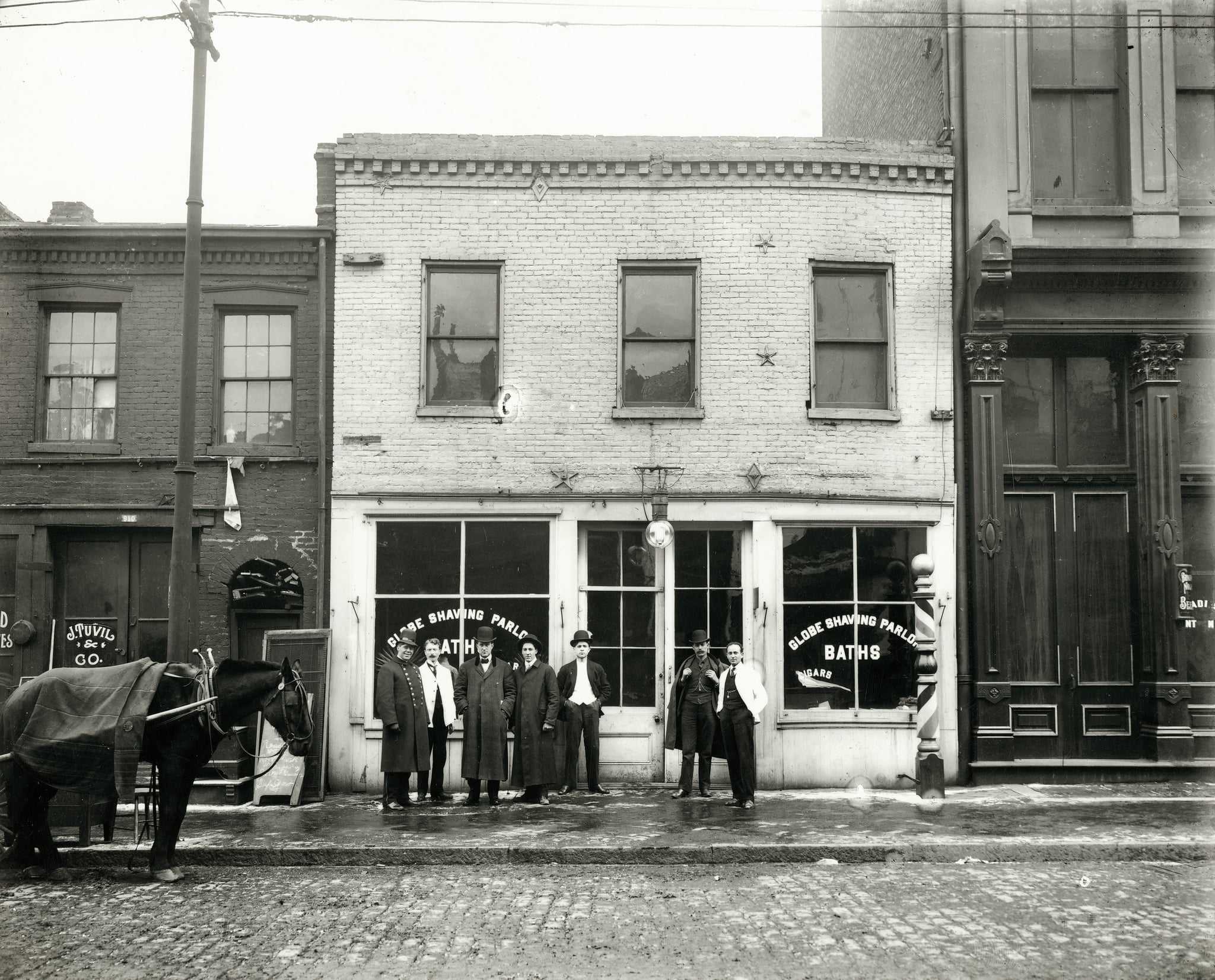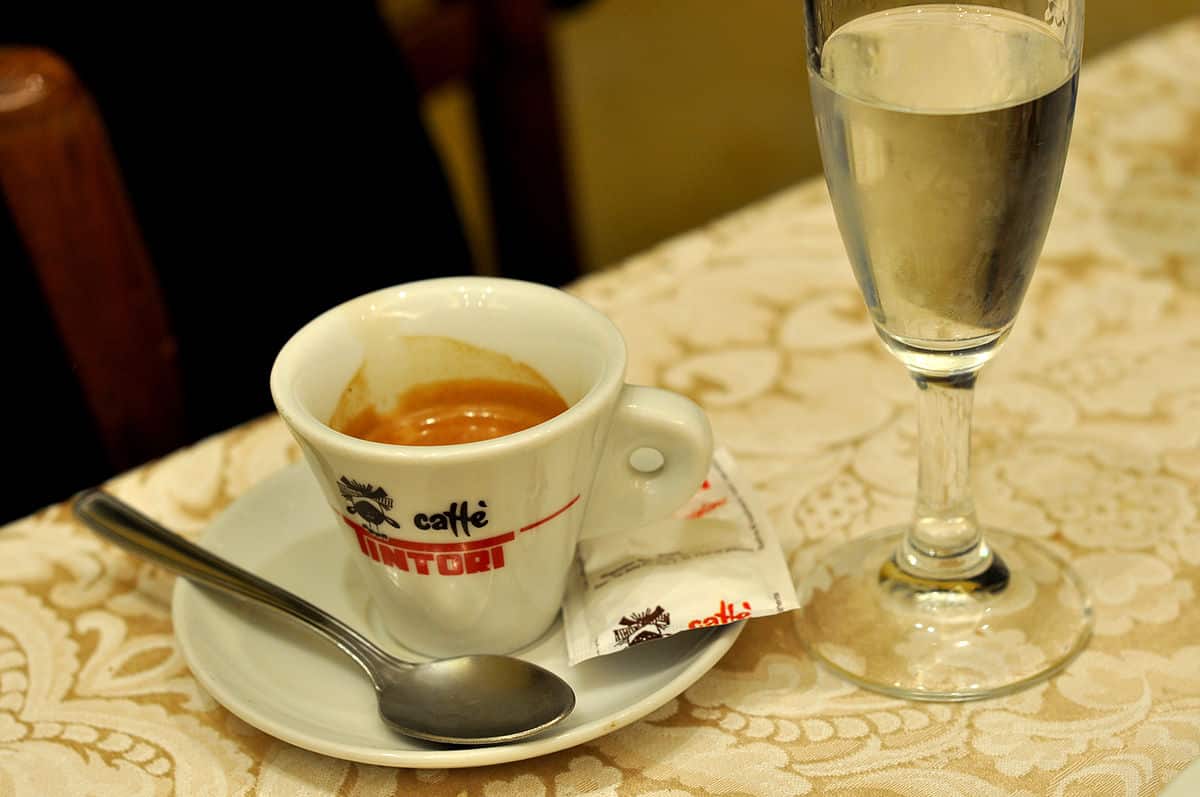Volpi Food’s original storefront is small on the inside.
The glass deli counter is full of soccer ball sized cured meats waiting to be sliced and pictures of Milan line the walls. But this Italian goods store is thousands of miles from its roots, in a beloved neighborhood of St. Louis, Missouri.
Nearly hidden behind the crammed counter is retail manager Lia Abbate. She’s worked at Volpi’s for over 25 years and she kindly points out Volpi’s best sellers: Prosciutto and the house salami Genova Salami. The cured meats haven’t changed much since the deli was founded in 1902 by John Volpi.
Volpi’s is one food staple of the neighborhood, frequented by locals and anyone looking for charcuterie so good, you’ll be turned off Oscar Myer forever.
During the late 1800s in St. Louis, Missouri, Italians immigrated to an undeveloped area later dubbed the Hill. Immigrants came to the area to work in clay mines. The community grew and today, the geographic location of the Hill is bounded by Kingshighway, Northrup, January, and Southwest Avenues. It’s visually distinguishable by rows of shotgun houses, each close to the other and with a stoop and clean sidewalks– the type of neighborhood that invites lounging on the porch, leaning over to chat with the neighbors and watch the kids play.
The shops and restaurants were first made to serve the locals with imported goods from their hometowns and local-made versions of wine, meat and cheese. The Catholic Church Saint Ambrose stands at the center of the neighborhood.

Unlike Volpi, which makes and offers food that is very much like its counterparts in Italy, Missouri Baking Co. has had to change its offerings. Missouri Baking Co. is about a minute walk from Volpi. Inside, a long L-shaped display case is filled with sweets. The store is filled with the smell of fresh-baked cookies and, even on a Tuesday afternoon, the line is long. Customers take numbers and wait their turn to pick out cookies or cakes.
Missouri Baking Co. was found in 1925 and has been in operation from the same building ever since. Owner Mimi Mordo says everything is still made by hand. The bakery sells more cookies than anything else.
“We sold 16,000 pounds of cookies between thanksgiving and new year’s last year,” says Mimi.
Other popular treats include chocolate drop candies and gooey butter cake.
The cannoli have been changed to fit American pallets with traditional cannoli alongside chocolate and coffee flavored varieties. There is also tiramisu, a popular treat, “everyone makes their own version,” Mimi says.
Behind the glass cases in smaller portions are some traditional Italian fare. Zeppoli, also known as St. Josephs bread, is made for the feast of St. Joseph every March 19th.
“It’s a big deal,” Mordo says.
Making a particular dish or treat for a specific time of year is common in Italy. Italian professor Dario D’Ambrosa talks about traditional Florentine sweets fondly. Pandaro and panettone are two such treats that are only made for Christmas. Pandaro is a sweet yeast bread that usually has icing or powdered sugar on top and panettone is cake with candied fruits or raisins in it.
“You can’t get this any other time of the year,” Dario says.
Christmas isn’t the only time of year that has special treats. For Carnevale, the week before lent, Italians make chiacchiere di carnevale, a sweet deep fried treat. And for Easter, Dario says Italians make pudding shaped like a dove.
Bread and cured meats are staples in much of Italian cuisine. Gelato and coffee drinks are also popular in Italy and have their own counterparts all the way back in St. Louis, on the Hill.
Gilato Di Riso is the only gelato store on the Hill, located across the street from the catholic church Saint Ambrose. It is spacious and cheery with a modern looking blue-ish grey interior. Caroline Martin and Janie McCarthy were the baristas during my visit. They both agree that the most popular flavor is chocolate.
The flavor names are written in Italian with English translations next to them and the many flavors in the case are common in Italy, including fragola (strawberry), frutti di bosco (mixed berry), limone (lemon), nicciola (hazelnut), straciatella (chocolate chip), and pistachio.
Seasonal flavors crop up at the shop. Gelato di Riso has served watermelon, peppermint, and pumpkin spice. This experimentation with gelato flavors is common in Italy too, where it’s possible to find unique flavors including black sesame seed or lime.
Even though the gelato store hasn’t been in the area as long as some of the other stores, it is very similar to what one would find in Italy. But the same can’t be said about the final stop and an important part of any Italian’s day: coffee.
In Italian cities there are coffee shops, called bars, on almost every corner. Italians pop in for a quick pick-me-up shot of espresso. Drinks with milk, such as lattes and cappuccinos, are for breakfast only, says Giulio Piotti. Giulio is a barista at Caffe Ricasoli in Florence. Espresso is for any time, Giulio says. In fact, Italians will often sip an espresso shot after lunch and dinner.
But, there is no equivalent of the Italian coffee bar on the Hill. There is a coffee place, Shaw’s coffee and it serves up all the common coffee and espresso drinks that Americans expect, as well as flavored and iced versions. But no where in America, even little Italys, is there a culture of popping in for a quick espresso.

The Hill’s history and food make it a popular spot for visitors and St. Louis natives alike. The shops offer a glimpse into how Italian food in the area has changed to fit Midwestern tastes and in other ways, how staples have beat the odds and stayed very much the same as their Italian roots. Exploring the flavors and traditions of the Hill is a walk through Italian flavors in the heart of America.
